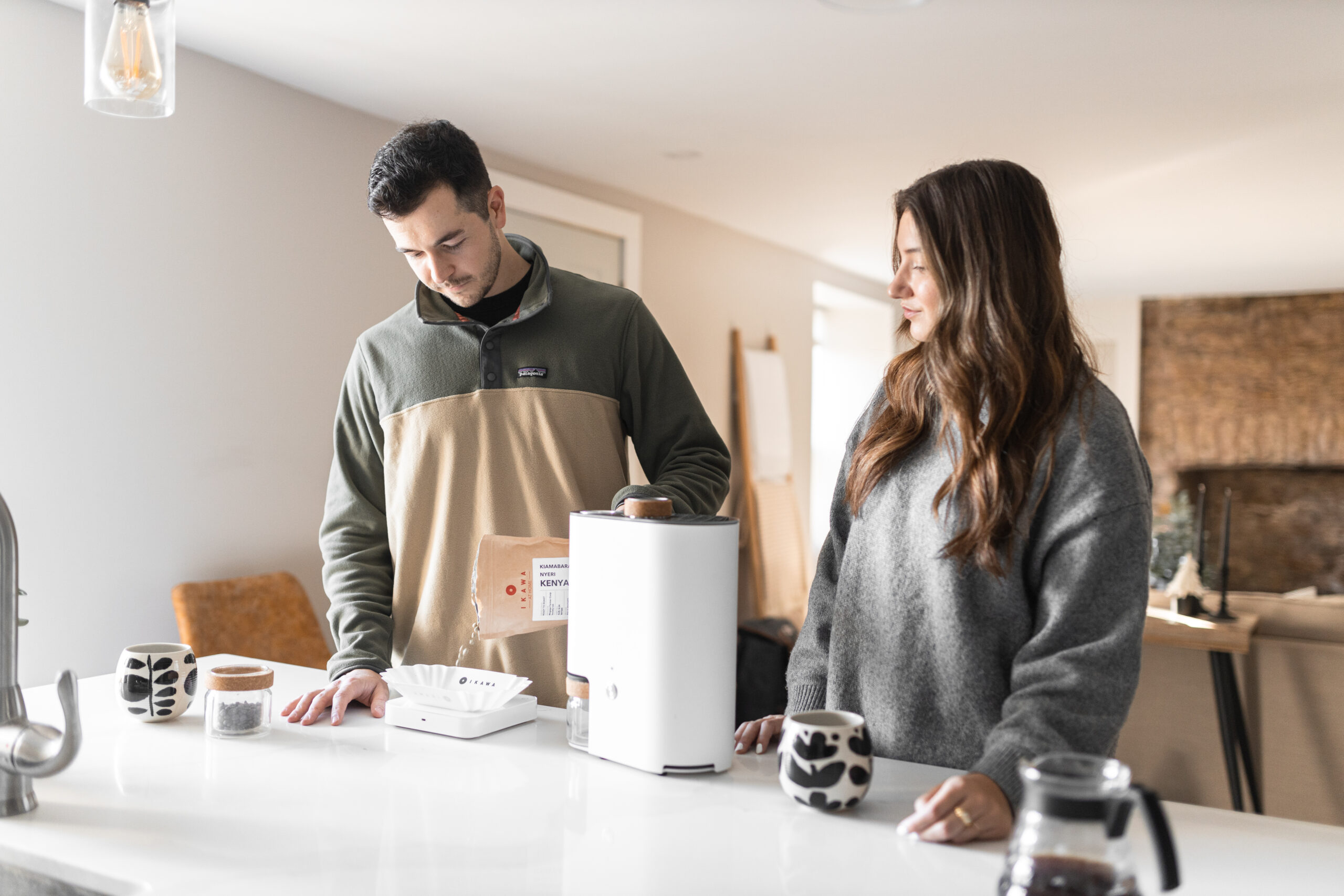
In this post, we will take a look at why our recommended recipes are the way they are, before showing you an example of what we have done to change them.
The coffee we used for this exercise is a Guatemalan, brought to us by smallholder farmers in Poaquil. It’s a wonderful coffee with an interesting backstory. Here’s the key information about this coffee you should bear in mind:
Varieties: mix of Catuai, Caturra, Typica, Pache
Elevation: 1,650 – 2,200 metres above sea level
Process: washed
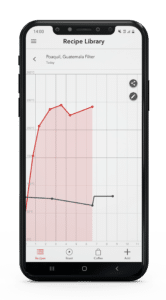
As the chemical reactions start to become more intense, we decrease heat. This is very deliberately before first crack, to help ease the coffee into its development stage without it becoming roasty or overdeveloped.
The inlet temperature never rises above 250˚C (482˚F) in this light roast recipe. There is a short development time, at about 20% of the total roast; very typical of light roasts.
The fan speed used aims at being slightly higher than that of the espresso recipe to aid a quicker roast cycle, resulting in a shorter development time.
The combination of a lower heat application along with a faster fan speed aims to create a super sweet and bright coffee. Ideally, you will taste citrus fruit,floral notes and a thin tea-like body.
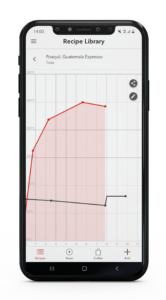
We’ve achieved this in two key ways: 1) by making the early heat application more gradual and climbing to our maximum temperature later in the roast, we have extended the time it takes to go through yellowing and into the browning stage of the roast. 2) We have ever so slightly increased that maximum temperature by 5˚ C.
Additionally, because we have extended the length of roast time, we have gone for a slightly slower fan speed. It should make for a very sweet and smooth espresso. Ideally, you will be able to taste flavours of dried fruit and citrus, along with some more traditional roast flavours of caramel.
Before we show you how we have used roasting principles to make some positive changes to our recommended recipes, we would like to show you what an unsuccessful recipe is. It’s often through failure that we learn the most.
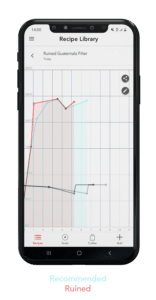
In this recipe we have made changes to the recommended recipe to attempt a lighter roast. Sadly, it was an unsuccessful attempt which resulted in an underdeveloped roast. Here’s what we did, why we did it, and how it caused underdevelopment.
Our approach to achieve the lighter roast involved first applying heat more aggressively in the initial drying phase by increasing the 2nd temperature point up to 236˚C (457˚F) and moving it forward by 18 seconds (1:21 to 1:03) . Although this sounds counterintuitive, it was aimed at minimising the hay, grassy flavour that can be present in underdeveloped roasts by accelerating the momentum of the coffee.
This would, in theory, allow us to reduce the overall time of our roast – which we did by changing the last temperature point to 5:15 (1:20 less than the original) and by slightly reducing the temperature.
Although these two changes worked to an extent, they did not compliment each other well enough. The accelerated early stages did result in an earlier first crack, but it was only 15 seconds earlier. This combined with a shorter overall roast led to a 5% development time ratio. Despite our efforts this roast resulted in flavours of grain, hay, and unripe lime. These flavours are undesirable to our taste. Perhaps by extending our development time, by 20 seconds or more, we might have achieved what we aimed for.
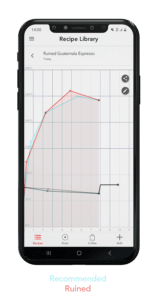
We decided that we wanted our espresso recipe to achieve a darker colour and more roasty flavour profile. Our first change is to reduce the first temperature point to 124˚C (255˚F) in an attempt to lengthen the drying phase. In reality, our change was too drastic and this caused the coffee to come into the maillard (browning) stage too slowly.
And although from there the recipe follows a similar trajectory as the original recipe, there is a difference! We brought forward the peak temperature point and increased the temperature to 260˚C (500˚F).
This high temperature causes the momentum of the roast to accelerate too quickly. By that we mean the amount of heat being produced by the actual beans is now starting to create even more heat in the air, which creates more heat in the beans – and on and on. A sign of this is that you might notice the first crack being more intense, with louder more frequent pops.
Although the next temperature point seeks to decrease the heat, it’s too little, too late; we are left with a coffee that has already been over developed. The flavours of dark chocolate, licorice, burnt toast, and a rancid oil aftertaste are not desirable to our tastes.
Finally, we will look at what we could do to our recipes to achieve different (but still good!) flavours – before handing the wheel over to you to make some educated changes in the pursuit of whatever ‘better’ means to you.
Let’s take a look at what we can do to develop the original recommended recipes.
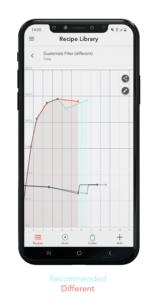
We follow the path of the original recipe for the most part, all the way until 3:32 minutes, through drying and yellow phase. However, after we’ve peaked at the same temperature as the original, we have removed the dip in temperature,originally intended to prevent over-development of our roast. Instead, the coffee continues on a strong trajectory towards first crack – which happens 20 seconds earlier as a result.
This has allowed us to shorten the overall roasting time by almost 1 minute, while still maintaining a very similar amount of development. This change leads to a less pronounced level of acidity in the cup and maintains a sweet and bright flavour profile, with citrus and a tea like body still shining through.

Although the beginning of the roast is the same as the original recipe, we have gone for quite a drastic change overall. Key to this change is bringing the peak temperature of our roast up to 260˚C (500˚F) and forward by over 3 minutes. This change brings the first crack forward quite considerably (to around 3:54 minutes) by pushing the momentum of the roast through the browning/Maillard stage quickly.
This faster pace through our key roasting stages allows us to reduce the overall roasting time by almost 2 minutes leading to the difficult balance of increasing development without over-developing the coffee. The result in the cup are flavours of toffee, red cherry, and a bittersweet chocolate finish.
So now that you see what we did that was successful and what failed, try it for yourself. Do you see the differences that we are talking about? Are you able to observe the different pace of the recipes through the viewing panel? Make notes of how each recipe develops differently, making note of colour changes and first crack.
If you have a recipe that you want to tweak, use our examples through trial and error to learn more how you can get the most out of your roaster. Our how to roast with IKAWA guide is a great place to start exploring roasting theory.
As always, we are listening to your feedback. Please feel free to reach out at hereforyou@ikawahome.com .
You can find the Seleccion Poaquil, Guatemala here.
And here are the recipes used in this blog:
Recommended Guatemala Filter
Recommended Guatemala Espresso